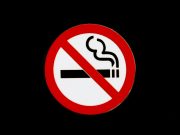Australia was once considered a world leader in tobacco control, successfully decreasing the local smoking rate from 28% in 1989–90, to 11% in 2020–21. In 2003, the island nation signed up to the World Health Organization (WHO) Framework Convention on Tobacco Control to help reduce tobacco use, and has sadly fully endorsed the health agency’s prohibitionist approach. As a result, the nation’s decline in smoking cessation rates has stalled.
Sure, effective regulation should balance facilitating legal access for adult smokers while restricting youth access. The problem is that the current model makes the products equally inaccessible for adults, because, amongst other things, many local doctors are reluctant to prescribe the products.
A preferred approach would be a tightly regulated consumer model, where licensed retail outlets with strict age verification sell nicotine vaping products. Regulations should be proportionate to the lower risks of vaping compared to smoking. Adopting a consumer model would align Australia with other Western countries and enhance public health outcomes.
Australia’s current prescription model pushes adults to the black market alongside minors
A paper by local experts in the field Dr. Colin Mendelosohn, Dr. Alex Wodak and Dr. Wayne Hall, has reiterated that very few adult vapers are using the legal prescription pathway anyway, given its complexity.
Moreover, a recent news.com.au investigation revealed that young Australians can easily purchase illicit products, such as nicotine pouches from local tobacconists. Sadly, this process is significnatly less complex than obtaining the products via legal channels, and involves simply asking for the product, which is then provided from behind the counter. Once again this underlines how prohibition backfires.
In fact, Dr. Mendelsohn who besides acclaimed reseacrher is also an award winning smoking cessation expert, shared in a recent blog the testimony of Rohan Pike. Founder of the Australian Border Force’s Tobacco Strike Team, Pike recently gave evidence during the Victorian Parliamentary Inquiry into vaping, during which he emphasized that Australia should adopt a regulated retail market for vapes, similar to the one in New Zealand.
The Border Force expert criticized the Australian government’s vape ban, stating that prohibition is ineffective and only drives criminal activity. He highlighted how criminals adapt to enforcement by shifting methods, such as moving sales online or using safe houses, and advocated for strict regulation and sensible excise taxes, citing New Zealand’s 15% VAT on vapes as a successful example.
Pike emphasized that vaping and nicotine pouches are significantly safer than smoking cigarettes and suggested that a shift to these alternatives would benefit public health. He also noted that nicotine use has a long history, with a substantial portion of the population continuing to use it for various reasons, making it challenging to eliminate entirely.
The moral panic over youth vaping is greatly fuelled by the media
In another Blog, Mendelsohn shared a University of Queensland analysis which revealed that Australian media has fuelled the moral panic over youth vaping through sensationalized and biased reporting. He highlighted that the media often frames vaping as a “poisonous epidemic” or a “failure of control,” exaggerating risks and pressuring regulators into heavy-handed responses without considering unintended consequences.
Pro-vaping experts are rarely covered, while critics dominate the narrative. This distorted portrayal leads the public to wrongly equate vaping’s harm with smoking. The report suggests that a more balanced, factual approach could lead to better education and harm reduction strategies, but current coverage lacks this nuance.
Exagerations and plain lies
In fact Dr. Mendelsohn argues against the Australian Medical Association and public health organizations’ push for stricter vaping regulations, emphasizing that concerns about youth vaping are often exaggerated. He highlighted that according to the 2022/23 ASSAD survey, only a small percentage of Australian youth vape regularly, with most trying it only once or twice. The majority of vapers in Australia are adults.
Mendelsohn highlights that serious harm from youth vaping is rare, with limited exposure to toxicants and no strong evidence linking vaping to significant health risks or nicotine’s impact on the adolescent brain. He also notes that nicotine dependence among youth is uncommon and manageable.
He reiterated that vaping is less harmful than smoking and other risky behaviors like binge drinking or drug use. Moreover, youth vaping rates have declined in several countries, and there’s actually no evidence that vaping leads to smoking. While there is significnat data indicating that vaping is reducing youth smoking rates.
A simple, effective, and practical approach, known to work
In line with his peers, Mendelsohn has consistently advocated for a regulated legal market with strict age verification, a ban on youth-appealing flavours, honest education about vaping risks, and controlled advertising. He believes that such regulations would reduce youth vaping while providing safer alternatives for adult smokers, as opposed to the current black market.













